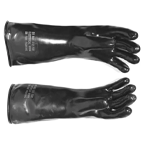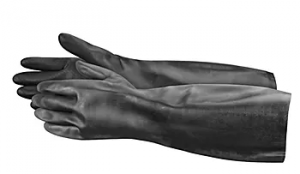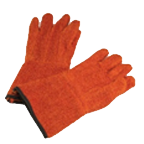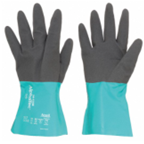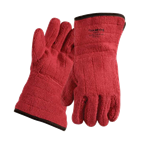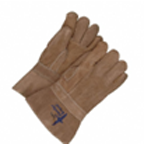Appropriate hand protection must be used for laboratory work where there is a potential for hands to be exposed to a hazardous chemical or a physical hazard that could result in skin damage, chemical absorption, severe cuts or lacerations, abrasions, punctures, or harmful temperatures. Please refer to the guidance and resources provided below to help determine appropriate hand protection for hazards present in the lab.
USE – Best Practices When Using Hand Protection
DETERMINE – Hazard Specific Recommendations for Hand Protection
SELECT – Please reference the recommended glove chart below for general recommendations when selecting gloves:


